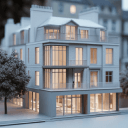3D modeling software enhances home office design through precise space planning. Users input exact dimensions, ensuring furniture pieces like desks and chairs fit the intended space. This method eliminates guesswork, optimizing room layout for functionality and flow. Visualization tools in the software allow for the adjustment of lighting and color schemes, making it easier to create a productive ambiance. Research shows that well-lit, aesthetically pleasing environments can boost productivity by up to 20%.
Software features support diverse design needs, catering to professionals across fields such as graphic design, where large monitors and tablets necessitate specific desk configurations, and finance, where file storage and multiple monitors become crucial. The adaptability of 3D modeling tools meets these varied requirements effectively, demonstrating versatility by accommodating each profession’s unique needs.
Traditional design methods rely on manual measurements and imagined layouts, often leading to spatial misjudgments and unsatisfactory results. 3D modeling software provides a superior alternative, offering real-time updates and 3D walkthroughs that traditional methods cannot. These advanced features significantly reduce design errors, saving time and money.
Arcadium, with its browser-based platform, simplifies this process further for people that work from home and are not in need of advanced and complex 3d software. Its user-friendly interface allows for quick learning and application, making the creation of 3D house plans straightforward. This tool streamlines the design of functional home offices, reflecting the shift towards more efficient, technology-driven solutions in interior design.
Contents:
Exploring 3D Modeling Software for Home Office Design
Why consider 3D modeling software for designing a home office? Its precision allows creators to visualize and experiment with different layouts, furniture arrangements, and decor styles in a virtual environment. Architects utilize these tools to draft detailed floor plans, while interior designers select color schemes and furnishings that align with the user’s preferences. Users can adjust dimensions, swap out elements, and explore various design concepts without physical limitations or the need for tangible resources.
How does 3D modeling software enhance the planning process? By offering real-time feedback and comprehensive views from multiple angles, this technology simplifies identifying potential issues and opportunities for improvement in a home office setup. Engineers employ this software to test structural integrity and functionality, ensuring the space is not only aesthetically pleasing but also practical and safe. Lighting simulations, for instance, help in determining the optimal placement of windows and light fixtures to maximize natural light and enhance productivity.
What are the benefits of virtual walkthroughs in home office design? They provide an immersive experience that traditional blueprints cannot match, allowing clients to tour their future office space and feel its ambiance before any physical work begins. Real estate agents leverage these tours to showcase property potential, while contractors use them to verify measurements and installation specifics, reducing errors and the need for costly corrections. Virtual reality headsets can transport users directly into their future office, offering a comprehensive sense of space and flow.
In terms of cost-effectiveness and time-saving, utilizing 3D modeling software stands superior to traditional design methods. Sketching by hand is time-consuming and often requires multiple revisions, whereas software can generate and modify designs with a few clicks. The manual creation of models and prototypes demands extensive labor and material costs; digital models, however, are created with minimal expenses and can be easily adjusted to suit evolving preferences or requirements. This approach not only accelerates the decision-making process but also significantly reduces the overall design phase duration, leading to faster project completion.
What distinguishes top 3D modeling tools in the market? High precision and extensive flexibility stand out. Tools offer various modeling techniques, including solid, surface, and mesh modeling. Designers adjust dimensions easily, ensuring accurate room layouts and furniture placement.
How do leading tools enhance visualization? They integrate advanced rendering capabilities. This feature transforms basic models into lifelike images, showcasing textures like wood and fabrics vividly. Lighting effects mimic real-world scenarios, making virtual spaces feel tangible.
Do these tools support collaboration? Absolutely. Platforms include features for real-time editing and feedback, facilitating teamwork among architects, designers, and clients. Cloud-based storage enables access to projects from any location, streamlining the design process.
In functionality, top tools surpass others by incorporating user-friendly interfaces and customizable dashboards, which accelerate the learning curve and boost productivity. Their extensive libraries, filled with pre-modeled furniture and decor items, save time. Superior tools also offer more robust simulation options, allowing for environmental and stress analysis, vital for ensuring the practicality and durability of home office designs.
Optimizing Small Spaces with Functional Furniture Layouts
How can 3D modeling software assist in maximizing limited space for a home office? By enabling the visualization of different furniture arrangements without the physical labor of moving items. Chairs, desks, and shelves can be virtually positioned in various configurations to utilize every inch effectively. This process identifies the most space-efficient layout, ensuring essential equipment and storage are accessible.
Why is it crucial to consider the functionality of every piece of furniture in a small home office? Because each item must serve multiple purposes to avoid clutter. A desk with built-in storage compartments, for example, eliminates the need for separate filing cabinets. Similarly, foldable chairs provide seating for clients or collaborators without permanently occupying floor space. By selecting multi-functional furniture, the office remains spacious and versatile.
What role does lighting play in designing a functional small home office? Proper lighting is essential for reducing eye strain and enhancing productivity. Wall-mounted lamps and under-shelf lighting illuminate the workspace effectively while conserving desk and floor space. By integrating lighting into the 3D model, optimal positions for fixtures are determined, ensuring the work area is bright without the need for bulky floor lamps or desk lamps that consume valuable space.
In optimizing small spaces, 3D modeling software proves more efficient than traditional planning methods, allowing for precise measurements and virtual experimentation without physical constraints. This approach not only saves time but also reduces the risk of purchasing inappropriate furniture sizes. The ability to preview different lighting setups without installation demonstrates the software's superiority in crafting a functional and visually appealing small home office.
Integration of Natural Light in Home Office Designs
How does natural light impact productivity in home offices? Studies show a significant increase in productivity and decrease in stress levels when workspaces are bathed in natural light. Windows, skylights, and solar tubes serve as conduits for sunlight, enhancing mood and concentration. A design prioritizing these elements, through 3D modeling software, ensures a workspace not only functional but also beneficial for mental health.
Can integrating natural light reduce the use of artificial lighting during the day? Absolutely. By strategically positioning the home office to maximize daylight exposure, the reliance on lamps and overhead lights diminishes. This approach, when planned using 3D modeling tools, results in lower electricity bills and a smaller carbon footprint. Energy-efficient designs incorporate large windows facing north in the Northern Hemisphere and south in the Southern Hemisphere to capture optimal light without increasing heat gain.
What are the design considerations for preventing glare and overheating? Properly integrating natural light involves more than just adding windows; it requires thoughtful planning to avoid drawbacks like glare on computer screens and excessive heat. Techniques include adjustable window treatments, such as blinds and curtains, and the use of tinted window glass. These solutions, easily visualized in 3D models, ensure a comfortable and productive working environment by mitigating direct sunlight at peak hours.
In terms of enhancing well-being and efficiency, natural light integration surpasses artificial illumination in home office designs. Workspaces illuminated by sunlight experience fewer instances of eyestrain and headaches in users than those relying solely on artificial sources. Natural light adapts to the day's progression, offering a dynamic lighting environment that artificial solutions cannot replicate, thus fostering a stronger connection to the natural world and promoting a healthier work-life balance.
Customizing Storage Solutions for Efficiency
How can one ensure that every item has its designated place in a home office? By leveraging 3D modeling software for custom storage solutions. This method allows individuals to visualize and adjust shelves, drawers, and cabinets to fit their specific needs. Books, documents, and office supplies find their perfect spot, optimizing the workspace for productivity.
Why is it critical to tailor storage spaces in a home office? Because one size does not fit all when it comes to storage needs. Various professions demand different tools and resources; an artist requires space for large canvases and brushes, while a consultant might need filing cabinets for paperwork and reports. Custom storage solutions accommodate these unique requirements, ensuring tools are handy and the workspace remains uncluttered.
How does customizing storage solutions impact overall office efficiency? Tailored storage directly influences time management and stress levels. Searching for misplaced items becomes a thing of the past, and the office transforms into a haven of efficiency. Workflows smooth out as every necessary item has a logical, easily accessible place. This organization minimizes distractions, fostering a more productive work environment.
In the domain of home office setup, the efficiency gained from customizing storage solutions eclipses the benefits of off-the-shelf options. Tailored solutions ensure maximum use of available space, unlike generic storage that might waste valuable square footage. Personalized setups adapt to individual workflow, enhancing the ease of accessing tools and documents, in stark contrast to standard storage which may not align with personal work habits.
Ergonomics and Comfort: Designing for Productivity
Why is ergonomics vital in a home office design? Ergonomics enhances comfort, reducing physical stress and increasing productivity. Desks at the correct height prevent strain on the shoulders and neck, while chairs offering lumbar support improve posture. Similarly, the placement of monitors at eye level and the use of ergonomic keyboards and mice reduce the risk of repetitive strain injuries.
How do ergonomics and comfort influence productivity? A well-designed ergonomic environment boosts efficiency and decreases fatigue. Employees working from home report higher satisfaction and output when their spaces are tailored to their physical needs. Natural lighting, for instance, reduces eye strain and improves mood, while temperature control keeps the environment conducive to sustained focus and performance.
Can 3D modeling software customize ergonomics for individual needs? Absolutely. 3D modeling allows for the creation of personalized workspaces that fit the unique dimensions and preferences of each individual. Adjustable desks and chairs can be virtually tested within the model, ensuring the physical setup supports various body types and working styles. This technology also enables the visualization of optimal lighting and equipment placement, guaranteeing a balance between comfort and functionality.
In terms of enhancing productivity, a well-considered ergonomic setup proves more beneficial than a conventional, aesthetics-focused approach. Workers in environments designed with ergonomics in mind experience fewer health issues like back pain and carpal tunnel syndrome, leading to less absenteeism and higher morale. The strategic placement of technology and furniture to facilitate ease of use and comfort directly correlates with an uptick in task completion rates and overall job satisfaction.
Evaluating Cost-Effective Home Office Design Solutions
Can budget constraints influence the selection of 3D modeling software for home office design? Absolutely. Various options offer a spectrum of functionalities at different price points. Free versions cater to basic needs while premium subscriptions provide advanced tools for intricate designs. Users must evaluate their project requirements against software capabilities.
Does the choice of software impact the quality of home office design? Undoubtedly. High-end software comes with sophisticated features like realistic lighting simulations and texture mapping, enhancing the final look. Conversely, more simplistic tools may limit creativity and precision, leading to a less appealing workspace.
How do professionals and amateurs differ in their software needs? Professionals often seek software with comprehensive capabilities, including detailed modeling and rendering. Amateurs, on the other hand, might prioritize user-friendly interfaces and basic design functions. Each group values different aspects, from ease of use to depth of customization.
Software with a steeper learning curve often yields more refined outcomes, enriching the home office ambiance. In contrast, user-friendly platforms expedite the design process, albeit at the expense of detail and customization levels. Cost-wise, freely available tools save immediate expenses, but investing in premium software might lead to long-term savings by achieving a more satisfying and functional home office design.
Adapting Home Offices for Multiple Uses with 3D Models
Can 3D models accurately predict the functionality of a home office adapted for various activities? Absolutely. Software solutions craft virtual environments where every piece of furniture, such as chairs, desks, and shelves, holds a place. This precision ensures that the designed space serves not only as an office but also as a studio or a reading nook, showcasing versatility.
How do designers ensure that a multi-use office space remains clutter-free? They use 3D models to allocate storage solutions, including cabinets and baskets, efficiently. By doing so, they maintain a balance between accessibility and neatness, a crucial aspect of any productive workspace. These models help in identifying the optimal spots for these storage units, ensuring that they support the room’s multiple purposes without causing disorder.
What role do lighting and color schemes play in these multifunctional spaces? 3D modeling software assists in selecting and positioning light fixtures, like lamps and ceiling lights, and choosing color palettes that enhance concentration and creativity. Through simulation, designers achieve a harmonious balance that adapts to the room's various uses, whether for work, reading, or creative projects. The software enables the experimentation with different setups until the perfect ambiance is realized for all intended activities.
When evaluating traditional single-purpose home offices against those designed for multiple uses through 3D modeling, the latter exhibit greater flexibility and efficiency. Multifunctional spaces, as designed with these advanced tools, better utilize square footage, offering owners more value per square inch. These environments cater to diverse needs, fostering productivity and creativity in a single, well-planned area. This approach contrasts sharply with single-use designs, which often underutilize available spaces and lack the adaptability that modern lifestyles demand.


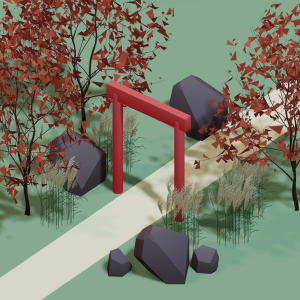 All training, tips and articles
All training, tips and articles
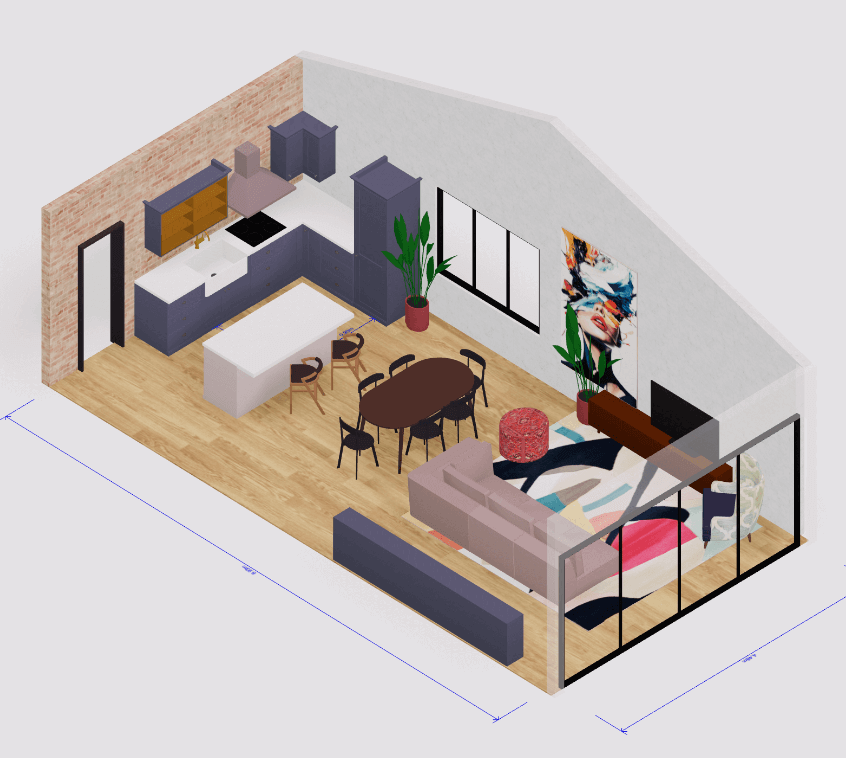 3D house design tool
3D house design tool
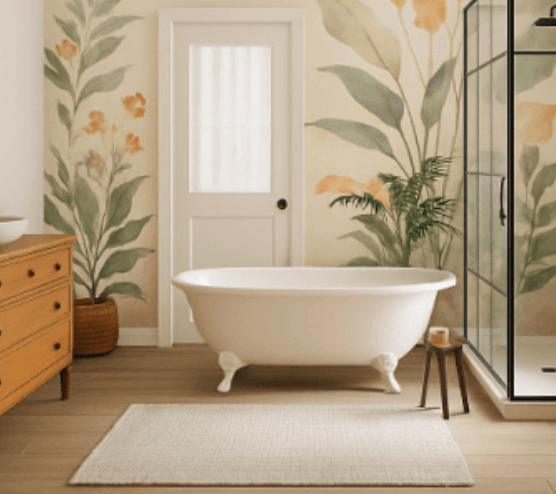
 Color palette generator
Color palette generator
 Floor plan creator
Floor plan creator
 Interior design app
Interior design app
 Kitchen design tool
Kitchen design tool
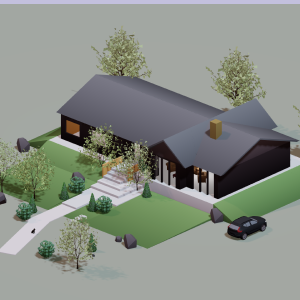 House design software
House design software
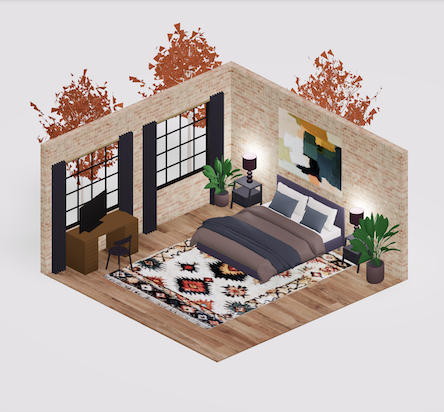 Room designer
Room designer
 Landscape design software
Landscape design software
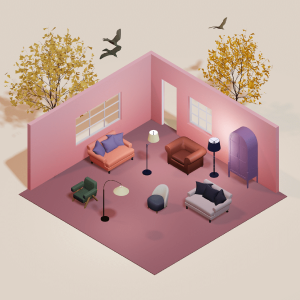 Bedroom design
Bedroom design
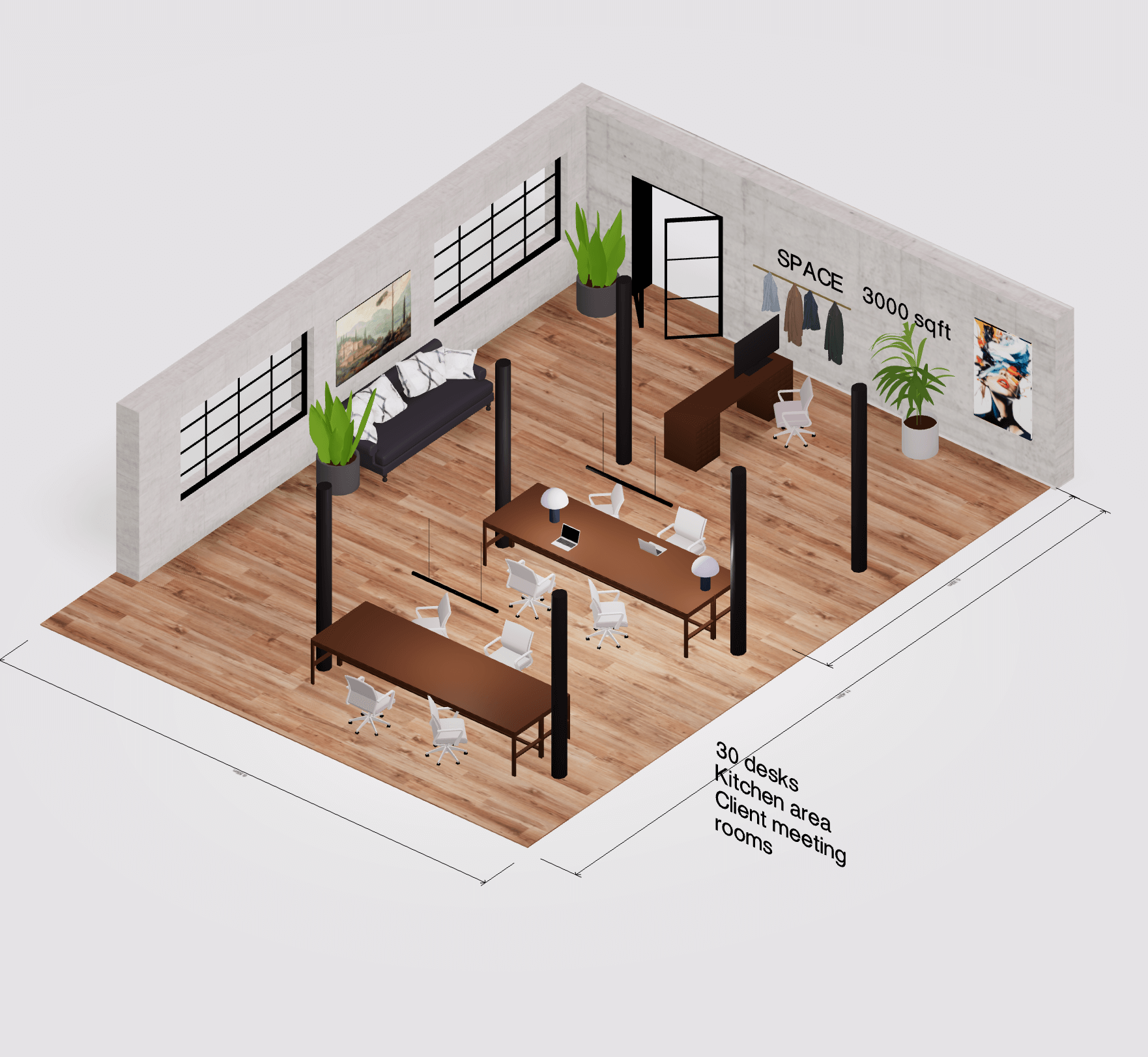 Office floor plan creator
Office floor plan creator
.png)



